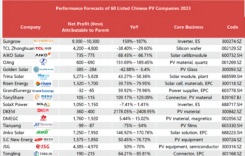PVTIME – On July 16, China’s long-awaited national carbon emission rights trading scheme was officially launched at the Shanghai Environment and Energy Exchange. As a part of China’s plans to use market mechanisms to help bring emissions to a peak before 2030 and to net-zero by 2060, emission permits allocated to participating firms can be used to cover their own emission or sell on the exchange.

One minute after the opening, the first transaction was successfully matched at a price of 52.78 yuan per tonne. A total of 160,000 tonnes were traded for 7.9 million yuan.
It is reported that the first batch of key emission units in the power generation industry to participate in the national carbon emission rights trading exceeds 2,162, and these companies are responsible for more than 4 billion tonnes of carbon dioxide emissions per year, which is approximately 40% of the national total.
China plans to expand the ETS to cover eight high-emission industries, including petrochemicals, chemicals, building materials, non-ferrous metals, papermaking, steel, power generation and aviation, though the timescale is not yet known.
The official launch of the carbon trading scheme means that the new energy industry represented by photovoltaics and wind power will enter a long-term business cycle. The improvement of the carbon trading platform and mechanism will play an important role in promoting the grid parity of photovoltaic power stations. After the carbon market has been upgraded to a nationwide scale, the installation of photovoltaic power stations on the roofs of key emission industries such as petrochemicals will help reduce carbon emissions and avoid spending more money on carbon emissions. The development of carbon assets of photovoltaic projects can benefit from the carbon market, which can subsidize traditional investments.











